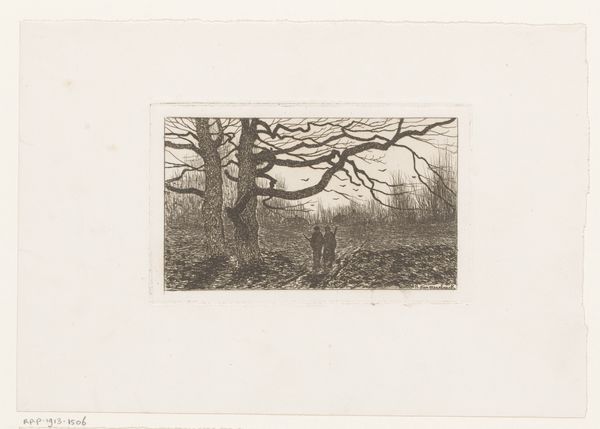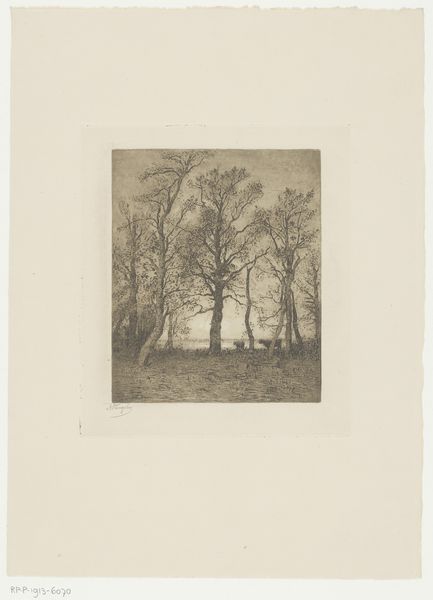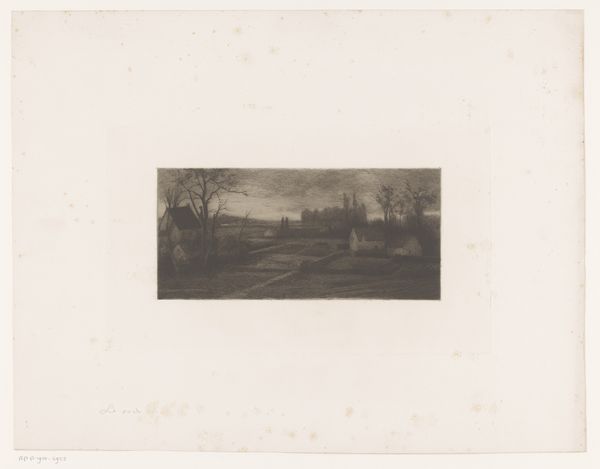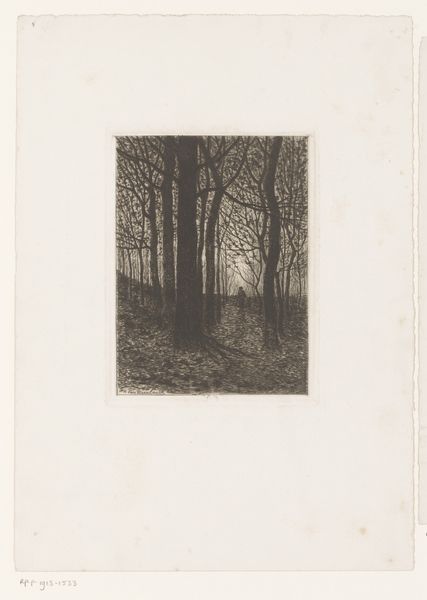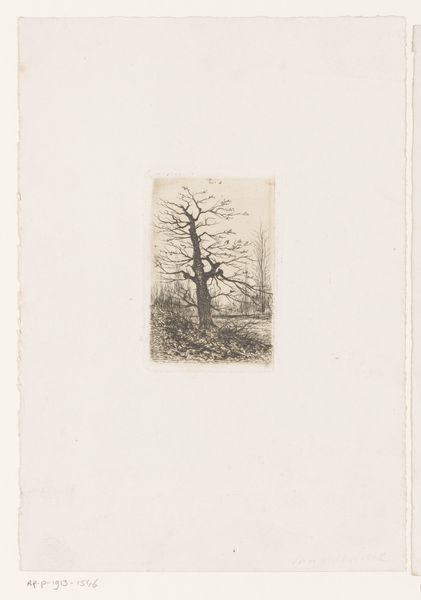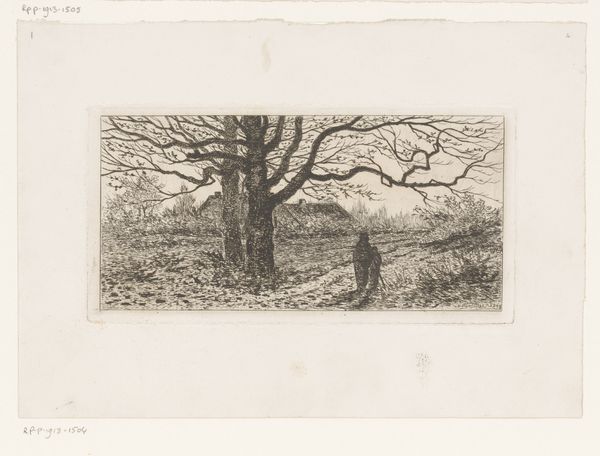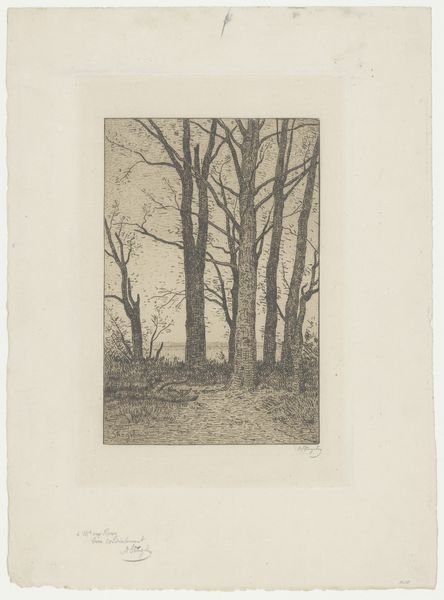
print, etching, paper
# print
#
etching
#
landscape
#
paper
#
genre-painting
#
realism
Dimensions: height 96 mm, width 156 mm
Copyright: Rijks Museum: Open Domain
Editor: We’re looking at “Landschap met twee jagers” (Landscape with Two Hunters) by H. van Meerbeeck, created sometime between 1850 and 1913. It’s a print, an etching on paper. It's quite a somber piece; the dark tones and barren trees give it a rather desolate feel. What strikes you when you look at this etching? Curator: Initially, I am drawn to the intricate lines of the etching, the sheer density of the marks. The artist uses this to create depth, particularly within the canopy of the central tree. Consider the strategic placement of light and shadow; notice how the light catches the edges of the clouds in the distance. Van Meerbeeck has meticulously built form and volume through a sophisticated vocabulary of strokes. The starkness you pointed out derives directly from this focused interplay. How does the scale of the figures relative to the landscape affect your reading? Editor: They seem very small, almost consumed by the landscape. Does this diminish their importance within the piece? Curator: Not necessarily diminished, but perhaps contextualized. They are but elements within a greater compositional architecture. Van Meerbeeck emphasizes line, texture and tonal values rather than relying on anecdotal details or emotional expressiveness connected with human action. Their posture and size emphasize a delicate balance in nature. Notice that through their darker form, they lead the viewer's eye across the horizon. Does this observation shift your reading? Editor: Yes, that is a good observation. I see how I might have imposed my subjective experience on the piece and missed what’s visually on display and that relationship it fosters in space. Curator: Precisely. Paying attention to formal construction opens possibilities to varied interpretations.
Comments
No comments
Be the first to comment and join the conversation on the ultimate creative platform.
